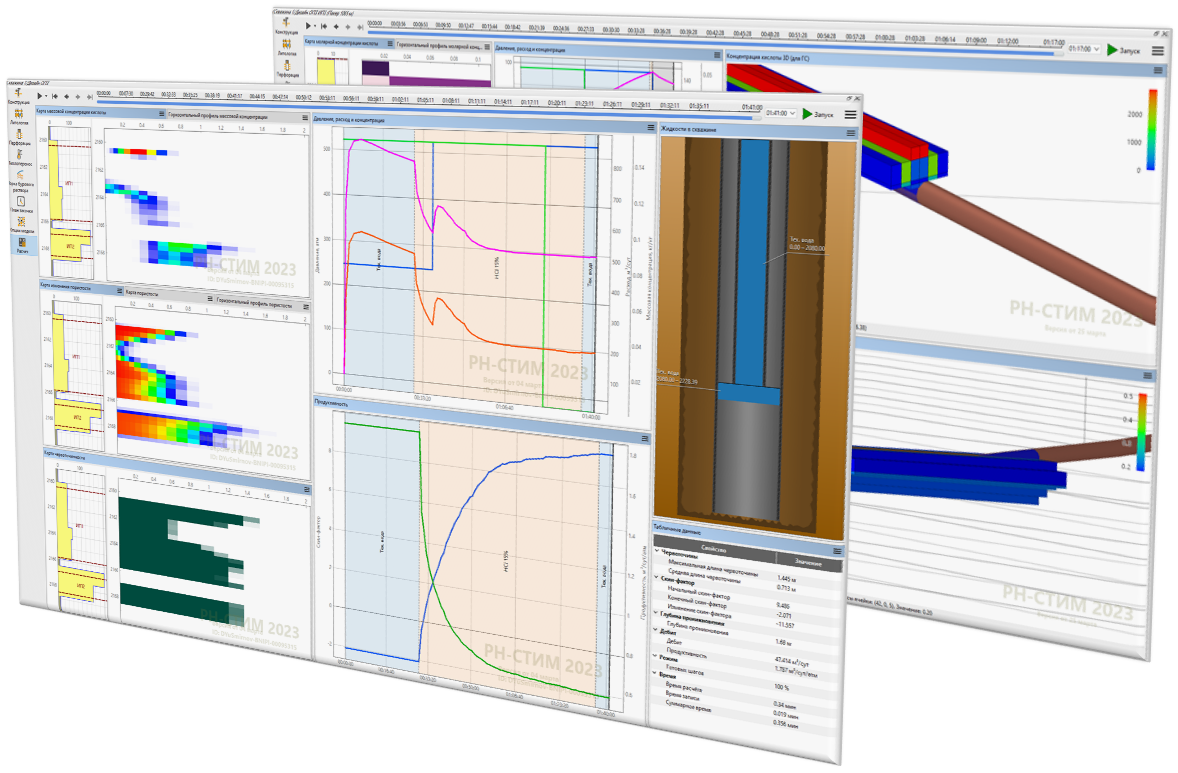Simple acid treatments are the most common type of near-wellbore zone treatment. They are aimed at acidizing near-wellbore pay rock to increase productivity. Targets for simple acid treatments can be oil, gas, injection or disposal wells. At the same time, modeling makes it possible to reliably transfer the results of laboratory studies to the well scale and will allow managing the processes in the bottomhole and near-wellbore zone.
RN-STIM simulator is based on the numerical solution of a system of equations that describes hydrodynamic processes, reactions of injected acids with rock and LCM. Reservoir properties and composition can be specified in the software, as well as damaging substances in the porous media. Up to five types of various fluids can be specified in RN-STIM based on modeling the non-Newtonian fluid flow in the well and reservoir, accounting for thermal effects as well.






